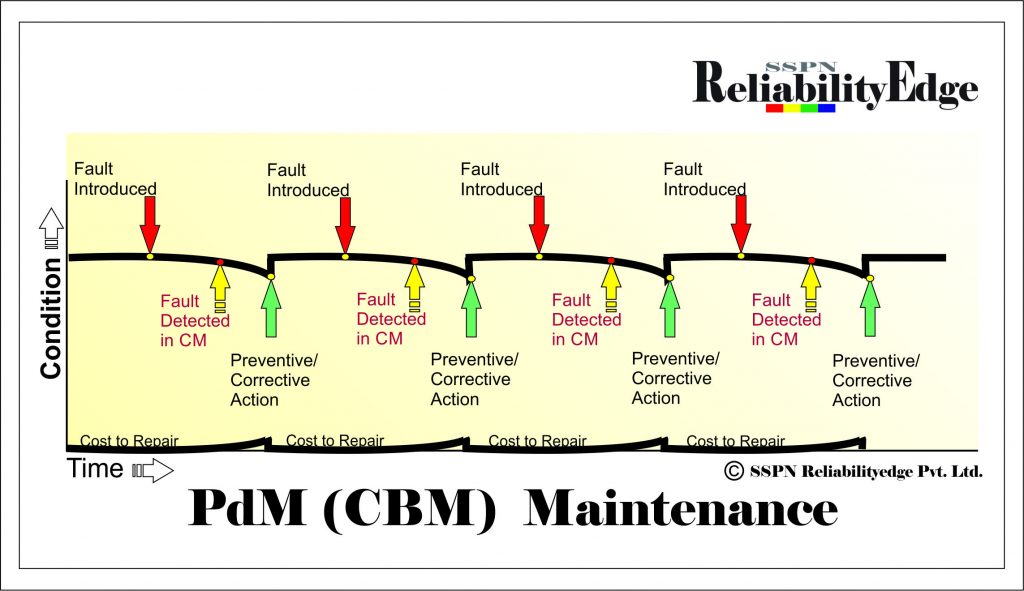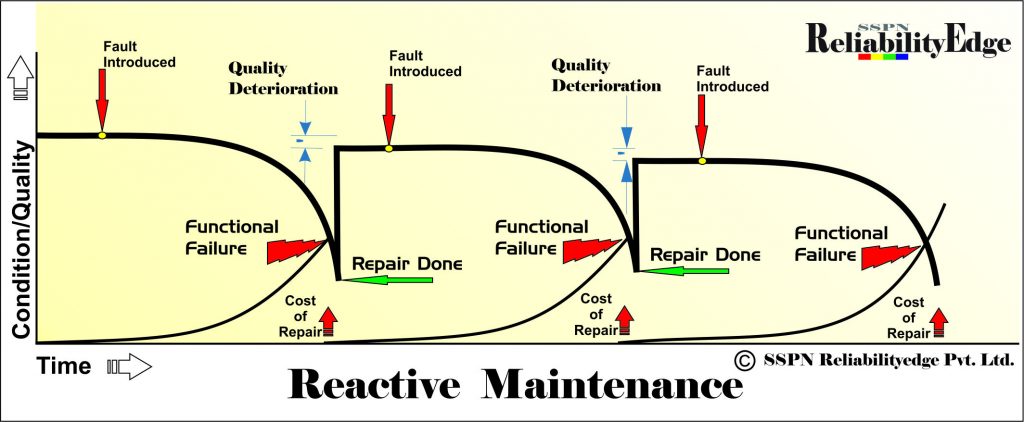Organic Maintenance 4.0 - Concept
Organic Maintenance 4.0 is an innovation and most effective maintenance solution at today’s age. As such today, Om 4.0 is an edge over the other conventional concepts like RCM, TPM, BCM.
Purpose: As a faculty of RCM & lifelong student of maintenance practices, We found the conventional maintenance concepts like Reliability Centered Maintenance – RCM & Total Productive Maintenance – TPM are not fulfilling the need of absolute maintenance. There are many missing techniques, ideas in these concepts. These concepts are more ideal, speculative, vague, hypothetical & academic and lesser practical. These concepts were making radical changes in the maintenance concept but incremental changes in maintenance practices. Although these were great concepts of their age, they were not wholly implementable practically. They had many limitations and not changed over time. They haven’t adopted the latest maintenance techniques.
Hence there was a need for a real practical, implementable, realistic and effective solution in Maintenance practices.
Objective: To provide easiest, practical, easily implementable, complete maintenance solutions to maintenance professionals.
Industrial Uptime Management – It is also called as plant uptime management. Plant Uptime is a process or production performance measure which is used extensively in many industries as an alternative or together with plant downtime. It is sometimes preferred to plant downtime because it incorporates all the possible downtime causes both scheduled and unscheduled therefore representing the time that the plant is actually up and running producing value added goods for customers.
At the end, this is the time the production line or process is making money for the business. Plant Uptime or plant availability is also a component in calculating plant & process OEE.
Plant uptime is calculated as a percentage figure of plant run time divided over available production time.
Plant Uptime = plant run time (production) / Total available time to run or produce
Plant run time = Total available time to run – scheduled and unscheduled downtime/stoppages
The UPTIME always affected by sudden stoppages of machines due to breakdowns and hence, by improving the reliability of plant & machinery by reducing the scheduled/unscheduled downtime.
From the statement above ‘At the end, UPTIME is the time the company is making money’, we can understand the importance of uptime to any industry/manufacturing company. It is not wrong to say here that the more the UPTIME, the more the Production Rate and the more the profitability of the company. Every type of manufacturing industry is interested in the improvement of their Uptime.
Uptime Management ≈ Industrial Asset Management ≈ Maintenance Management
It is finally managing the reliability of machines in the company to achieve unstopped production from those. Managing reliability means managing maintenance.
Today the word Maintenance is misunderstood. The Maintenance Department in a company is actually a repair department. Maintenance does not mean repair. Repairing is one of part of maintenance. Maintenance of equipment means maintaining a healthy condition of equipment not repairing failed equipment.
Today we have entered into 4th Maintenance Revolution. Maintenance 4.0 is the key word today. This new revolution is of AI & IIoT. This new maintenance strategy is called Prescriptive Maintenance (RxM).
The maintenance strategies evolved till now are Reactive Maintenance – RM (Maintenance 1.0), Preventive Maintenance – PM (Maintenance 2.0), Predictive Maintenance – PdM (Maintenance 3.0) & Prescriptive Maintenance (RxM).
These revolutions don’t mean opt to the newer version and throw away older one. Perfect & Contemporary Maintenance is congruence of the older & new maintenance strategies. In our concept, you will find congruence of RxM, PdM, RM & all forms of PM strategies.
Preventive Maintenance is of three types, Condition Based Preventive Maintenance (CBPM), Time Based Preventive Maintenance (TBPM) & Run Based Preventive Maintenance (RBPM).
Organic Maintenance 4.0 (OM 4.0) – Brief Intro …
Organic Maintenance 4.0 achieves the goals of Uptime management. It begins with Procurement of Plant & Machinery & it is never ending procedure. To understand the concept in details, we must see the following PIPF curve.

The figure 1, PIPF Curve is explaining Organic Maintenance concept. Up to point P interval in the curve indicates procurement & P –I interval indicate Installation. Procurement and installation of equipment have direct relationship with reliability & life of the equipment. Our Maintenance starts with Procurement of equipment. Many times the components of equipment may not be suitable for operating conditions at the destination point. Preventive Maintenance provisions are missing in many components of the equipment. It makes the PM impossible or difficult in those equipment. Provisions for condition monitoring too are not provided in most of the equipment. The first level of reliability comes here at the time of procurement.
The second level, the P-I Interval in the curve is a perfect installation of equipment. Bathtub curve explains the higher infant mortality rate of industrial equipment. The reason lies in improper procurement & installation of equipment. The Installation factors those affects reliability are a weak foundation, Base Rail Deformation, Soft Foot Conditions, Improper Fastening, Cable Strain, Piping Strain etc.
The third level, the I–P Interval in the curve is of maintenance of Critical Equipment. Critical equipment undergoes Predictive Maintenance (PdM) or Prescriptive Maintenance (RxM) & Condition Based Preventive Maintenance (CBPM). And fourth level, the I-F interval in the curve is of maintenance of Non- Critical Equipment. Non-Critical equipment undergoes Planned Reactive Maintenance. There is a fifth invisible layer here which is not in the curve is of maintenance of Non- Critical & Not Essential equipment. These are the equipment/machines; those can be repaired in such a time period that doesn’t affect productivity.
Critical Equipment are those which needs very costly spare parts, takes longer time to repair, affects production if failed, affects the product quality if failed. Let us learn about PdM (CBM) & RxM through a graph,

Figure 2, shows the curve of PdM or CBM or RxM. (RxM is an improved version of PdM). The fault that got introduced in the equipment is detected at a much early stage and hence we get enough time to schedule for corrective action. We can schedule the corrective action without disturbing the productivity. Hence, production doesn’t suffer. Here the PdM means manual periodic CM visits, manual data collection, & manual data analysis.
PdM = Manual CM + RCSA + CBPM + CA
Here, RCSA is Root Cause Symptom Analysis. The detection of the introduction of fault at an early stage is symptom here. The RCA conducted after getting this warning sign is called root cause symptom analysis. After getting the early warning, the root cause is investigated and corrective action or CBPM is suggested.
Predictive Maintenance (RxM) means Real Time Condition Monitoring (RTCM), and computerized Data Analysis & RCSA and prescriptions. Here the RTCM system itself will collect the online data, will do the analysis of that data & will suggest the corrective actions to be taken.
The Condition Based Preventive Maintenance (CBPM) will be done to restore the condition of the equipment to normal, whenever we get indications of changes in data from CM.
Predictive Maintenance (PdM) or Condition Based Maintenance (CBM) and RxM are costlier maintenance strategy. Any medium size plant has thousands of equipment/ machines/ infrastructure, where it is not worth to spend huge money on PdM/ RxM of all the equipment/machines in the plant. Here comes the need of Reactive Maintenance, RM.
We are introducing Planned Reactive Maintenance (PRM) here. It is a new improved version of RM. RM can be Fire Fighting Maintenance but PRM is not. In PRM, we manage the Spare Parts likely to be replaced, workmanship & SOP well arranged in advance itself. The resources of Spare Parts could be own store or a regular supplier and the resources of workmanship could be own trained manpower or service vendor. The equipment under PRM is restored in MART period. We are herewith introducing a term MART, i.e. Maximum Allowed Repair Time.
The MART period of each equipment/machines under PRM is fixed in coordination with the Production team. Let us see PRM graph here,

This graph (Fig 3) explains, immediate repair done after failure. The cost of repair is higher here than in PdM. The restoration period is least and not like in Reactive (fire fighting) maintenance. The cost of spare parts & workmanship is again under control and not excessive like in Fire Fighting Maintenance.
The PRM is supported by Time Based (Scheduled) Preventive Maintenance (TBPM) and Run Based Preventive Maintenance (RBPM) & Autonomous Maintenance (AM).
Those equipment/machines cannot be repaired/ restored back in MART period are added under PdM.
Now let us talk about, the part of maintenance not mentioned in PIPF curve, the Fire Fighting Maintenance. Most of the equipment are not falling under the above categories, those are machines smaller in size, with plenty availability in market and failure of those not affecting the productivity, are considered under Fire Fighting Maintenance.
Organic Maintenance 4.0 is not only a concept, but an action plan leads towards reliability & hence, uptime management.






